A strong and stable foundation is the key to the safety and durability of any building. This is especially true for the capital elements from which the walls and roof of any task are formed. Rafters or rafters are the main load-bearing structural elements of each roof. Reliable and correct fastening of the Mauerlat and rafters to it eliminates the risk of deformation and destruction of the roof as a result of external loads and its own weight. How to attach the rafters to the Mauerlat will be discussed later in this article.
Main fasteners for rafters

- Wire ties.
- Plates.
- WB brackets.
- Bolts and studs, complete with washers and nuts.
- KR corner.
- Self-tapping screws.
- LK fastener.
- Perforated tape (mounting).
- Nails.
Attaching the rafters to the mauerlat is sometimes done using brackets. The use of such a connection does not involve making inserts in the rafters, so as not to weaken this key structural detail. The mounting brackets are made of 0.2 cm thick zinc coated steel. The brackets are attached to the mauerlat and rafters made of wood with nails, anchors or self-tapping screws.
LK fasteners provide excellent fastening of the mauerlat and rafters to each other, and allow you to connect other parts of the system. When using fasteners of this type, an anchor connection is not used.
The use of perforated tape for installation strengthens the connecting node. This tape strengthens the connections between the legs of the rafters and the Mauerlat, while the load-bearing components of the structure are not weakened, since no inserts are made into them, leaving them intact. To attach the perforated tape, regular nails or self-tapping screws are required.
KR corners are a frequently used fastener for the rafter system. It is used when special reliability is needed when placing rafters on the mauerlat. The corner additionally strengthens the connecting nodes, increasing the load-bearing properties of the structure, and also eliminates the displacement of the rafters as a result of increased external loads. Inserting a corner into wooden parts rafter system is not needed, it is secured with self-tapping screws or special nails with protrusions.
It is necessary to ensure that the metal rafter fasteners are made from high-quality material that is reliably protected from corrosion.
Important: it is often difficult for an untrained builder to understand a large number of different fasteners.
How to fasten rafters - when is a Mauerlat needed?
Before you figure out how to attach the rafters, you need to determine where to install and secure them. Most often, the rafters are fixed to a specially constructed foundation (base) of the roof - the Mauerlat. This element is made from logs or beams and provides not only stable fastening of the rafters, but also allows you to evenly distribute the load on the main walls and even the foundation of the house. 
In housing constructions made entirely of wooden beams or logs, the supporting function for the rafters is performed by the strapping external walls at the top, and no other parts are installed.
For houses and buildings whose main walls are built from building materials such as brick, gas, foam or cinder blocks, a Mauerlat must be installed. This requirement is due to the fact that walls of this type very poorly withstand undistributed point loads. Also, piece building materials are not strong enough to secure the rafter structure well, since under load the fasteners can destroy the block and will be torn out of it. Therefore, laying the Mauerlat for such houses is mandatory.
For the most durable fastening of the wooden Mauerlat beams laid along the perimeter on the main walls of the house, it is necessary to create a reinforcing belt of concrete at the top of the walls. Fasteners for support beams are embedded into a monolithic beam 20x20 cm. Typically, for such fastening, anchors or metal pins with a diameter of at least 1.4 cm are used, placed strictly vertically in a monolithic beam. The lower ends of the anchors and studs are bent so that they are not torn out of the armored belt under the influence of load. The elements of such fasteners are located at a distance of no more than 1.5 m from each other.
Important: The use of studs whose diameter is less than 1.4 cm often leads to deformation of loaded fasteners.
Holes are made in the Mauerlat bars corresponding to the location of anchors or studs in the walls. The beam is put on the anchor, washers are put on its threaded free part, and then the nuts are screwed on. This technology ensures reliable fastening of the roof foundation to the walls of the house.
Before laying the beams, a waterproofing material (for example, roofing felt) is placed to prevent the wood of the beams from being destroyed by water.
How to attach rafters to the mauerlat
It will be necessary to mount rafters on support beams when erecting non-thrust and spacer rafter systems. The placement of truss layered or hanging legs on the Mauerlat is carried out using two types of connections: rigid or sliding. How to attach the rafters to the Mauerlat is chosen taking into account all the features of the rafter structure.
To avoid loss of reliability and load-bearing capacity, the notch is made in the rafters, and not in the mauerlat bars.
Rigid fastening relative to each other prevents the parts from completely moving and avoiding design problems such as shifts, bends or torsion. The required rigidity of the connection nodes is obtained if the legs of the rafters are attached to the mauerlat bars with corners with a support beam or if a special cut-out is made in the rafters - a “saddle”. The cut-in section itself in the rafter is additionally fastened with staples, screws, and bolts. In addition, a wire twist is made that connects the attachment point of the rafter legs on the Mauerlat and the anchor mounted in the main wall.
When erecting and fastening a house-building roof from wooden elements, a special part is used - a “sled”, which provides a sliding connection. The fastening unit of the rafter legs with a Mauerlat, which has the ability to slightly shift the rafters, allows you to avoid deformation of the roof during shrinkage of wooden housing construction made from beams or logs.
How to fasten rafters using a corner
When choosing a method for attaching rafter legs to the Mauerlat, you need to take into account the structural nuances of the roof. For example, if a rafter leg is installed with a “saddle” cut out, then the sequence installation work will be the following:
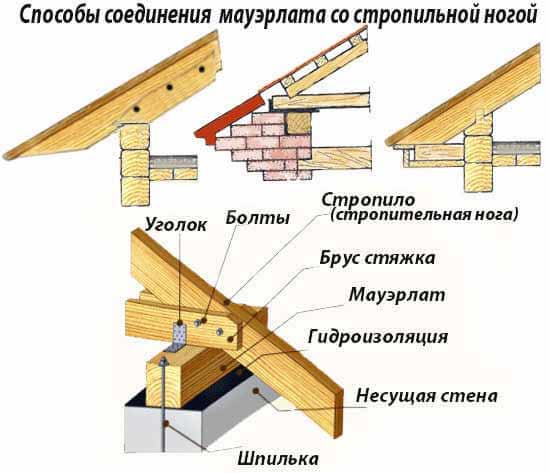
- A cutout is made in the rafter so that its horizontal part can be easily installed on a wooden beam, and the angle of inclination of the rafter must be the same as the inclination of the slope plane.
- The rafter leg is fixed with 3 nails, 2 of them are nailed at an angle on opposite sides of the rafter (so that they cross in the Mauerlat beam), and the 3rd nail is driven from above strictly vertically.
- For greater reliability, the fastening unit is fixed with staples or wire.
This attachment of the rafters to the Mauerlat has the required rigidity and strength of the fastening unit.
A common method of fastening is to fasten the rafters to the mauerlat with a steel angle and a hemming beam. The technology for securing the rafters is as follows:
- The rafters are cut at the required angle so that the slope of the pitched roof surface corresponds to the parameters specified in the roof construction project.
- At the edges of the mauerlat beams, a hemming beam about a meter long is laid and secured, while the rafter should rest firmly against it along the line of greatest load - this design will ensure the stability of the rafter system under a thrust load.
- On both opposite sides, the rafters are attached to the mauerlat using galvanized steel corners - this fastening option will ensure that there is no lateral displacement of the rafters.
- The finished fastening connection is additionally secured with wire.
Only correct fastening of the rafter legs to the Mauerlat will ensure reliable and long-term operation of the roof structure. There are many options for attaching rafters and mauerlat to each other, but there are General requirements to create such fastenings:
- when using threaded connections, it is necessary to install steel washers (plates) to prevent the nuts from sagging inside the wooden parts, as this contributes to gradual deformation and destruction of the fastening unit;
- The use of various linings is strictly not recommended: over time they deteriorate, this leads to incorrect changes in the loads of structural roofing parts and their subsequent premature destruction.
It is important during installation work to most tightly connect all surfaces of wooden parts, which will require verified and especially careful manufacturing of all the necessary parts (cuts and cuts).
Rafters are a special structural element that is erected during construction. pitched roofs. It consists of several main elements, which include vertical posts, rafter legs and inclined struts. In some cases, they are connected from below using beams. Usually rafters are made of timber. Special fasteners are used for fastening. It’s worth talking in more detail about what kind of fastenings there are for rafters.
Rafters and plates for their fastening
These elements may vary. The systems themselves are most often made in the form of a triangle, but sometimes alternative options are used to save space. An example would be an attic location. In this case, the arrangement of the rafters is such that it allows you to free up additional space where people can live. A very convenient method of arranging the system.
Fastenings for rafters can be varied. Fasteners are used to connect roof elements to each other. Here we can distinguish the following types: plates, sliding supports, angles, supports, rafter-beam fastenings, and so on.
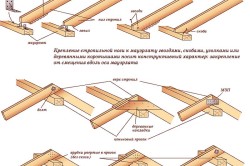
The plates in this series occupy a special place, since they are practically universal elements. They contain special holes through which self-tapping screws are screwed, which serve to connect two or more structural elements to each other. In this case, plates are applied to the parts to be joined on both sides. They can be easily cut to the desired size using tin snips. After all, we are not always talking about universal installation.
There are also nail plates that have a row of nails on one side. They are used only in industrial settings. Nails cannot be driven in. Here the fastening is carried out by squeezing the elements together. Fastenings for rafters of this type are very widespread among both professional builders and amateurs.
Reliable fastenings for rafters
To connect perpendicular structural elements, rafter-beam fastenings are used. These structural elements rest on each other in a perpendicular direction. To make the fastening more reliable, a pair of connecting elements are installed in opposite directions. One of them turns in the opposite direction.
Sometimes a situation arises when it is necessary to position the structure at a certain angle. This placement is used in timber buildings. Sliding rafter mounts are used precisely in this situation. Parts cannot always be fixed immovably. Sliding systems ensure the displacement of structural elements in the event of roof shrinkage. Very important element of the entire roofing system, which allows for no allowance for wood shrinkage during the installation process.
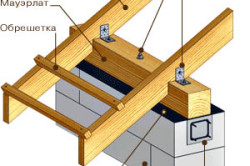
Beam supports will help secure horizontal structural elements at right angles to all other parts of the roof. Of course, if necessary. Here, fastening to the main support can be done using nails or self-tapping screws. There is no fundamental difference. The most important thing is that the fasteners for the rafters stay well in their rightful places. Beam supports can have a wide variety of structural dimensions. It all depends on which specific elements will be connected with their help.
A hidden beam bracket is used in cases where the installation needs to be hidden from prying eyes. After its installation, such an element is hidden entirely in the body of the beam.
Other rafter fastenings
Above were listed only the basic structural elements that are used to connect certain parts of the rafters. However, in this series there are other equally important fastenings for rafters, which are also used quite often.
One of these is a profile corner. This means that you can purchase a corner at any specialized store that distributes metal building materials.
Corners can have a wide variety of geometric sizes.
With their help, the structural elements of the rafters are connected to each other at right angles. If corners specially designed for roofing are used, they have special holes through which fastening is carried out. In this case, it is necessary to use self-tapping screws, since nails are not able to provide sufficient rigidity to the structural elements.

If we are talking about homemade corners, then you need to cut them according to certain dimensions specified in the roofing documentation. Next, holes are drilled in the elements to connect the rafters. Everything is quite simple. At the same time, you can save a lot of money, since ready-made corners are quite expensive. These elements are most often used to connect vertical beams with horizontal ones. Fastenings for rafters of this type are quite widespread.
Some manufacturers offer to purchase corners with oblong holes. They are specially designed for bolted connections. This is a rather interesting method of connecting parts. When drying, it will be possible to adjust the position of the structures relative to each other. Corners are also available at an angle of 135 degrees. They are used to connect elements located at an angle to each other. The structure of the roof is quite complex, so they also find their application here.
T-shaped fastening for rafters is also used very often. It provides reliable connection all elements perpendicular to each other.
Some features
In modern life, there are fastenings for rafters, which have very original names. An example would be a crutch. It received this name for a reason. This device is used to connect rotted elements of a rafter structure. It must first be driven into the masonry and then connected to the beam.

If during the construction of the roof you use perforated rather than flat fasteners, you can significantly speed up the process of connecting parts to each other. This results in a more rigid structure that will not be afraid of any external aggressive factors.
Thus, we can assume that today numerous fasteners for rafters have found their use. All of them are used for one purpose or another. Today you can easily build a roof highest quality thanks to the development of fastening materials. Now you can purchase almost any element that will connect the parts of the rafter system to each other.
Moreover, this connection does not necessarily have to be located at a right angle or lie in the same plane with the beam. Here we can safely talk about installation at an angle. This allows you to build competent structures that do not have any unnecessary parts. When settling in mansard roof You can’t do without special fasteners. Space can only be saved if some elements are connected at a certain inclined angle.
Having considered the main features and nuances of such products and methods of working with them, you will be as knowledgeable as possible about the upcoming process and will be able to make the right choice when purchasing. Good luck!
The rafter system is the frame of the entire roof. It is this design that takes on all the loads and is the basis for roofing. But for this system to work properly and reliably, the rafters must be secured correctly. This work can be done different ways. Much will depend on the location where the rafter legs are attached, as well as on the type of system itself. So how to complete the task correctly? What options for fastening rafters are there? This is what we will talk about.
We attach it to the Mauerlat
The rafter system is quite complex design. It includes many elements. That is why it is very important to correctly attach each part to the right place. When constructing the frame of the future roof along the entire perimeter of the walls of the house. This element must evenly distribute all loads. This is where the lower part of the rafters is most often fastened. An exception can only be if the role of the Mauerlat is played by the upper beam wooden house. But in this case, the fasteners are made in the same way. 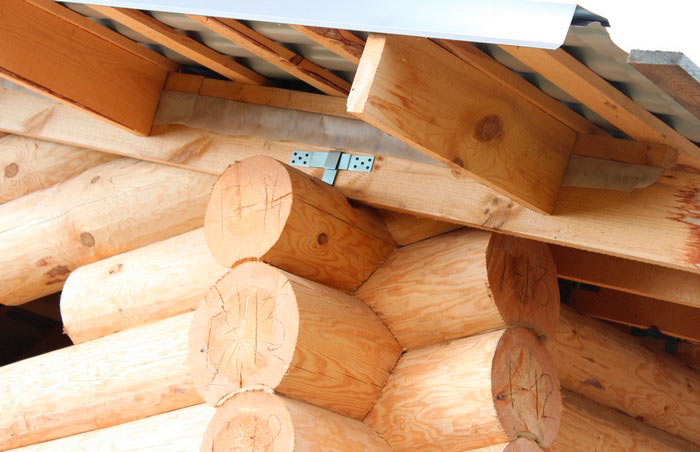
So how to do it? What options do professional builders offer? There are several methods of fastening, namely:
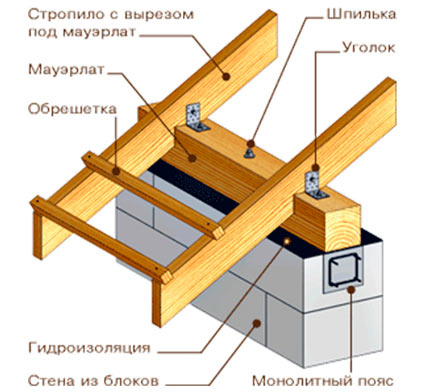
These are the main types of connection between rafters and Mauerlat. Quite often they are combined. For example, if you need to cover a log house with a roof (the walls are made of logs), then the sliding method is used. But for greater strength, the rafters are cut in an arc. This method is more labor-intensive and not every “newbie” can do it.
Video on the topic:
We attach to the ridge purlin and to each other
Fastening the rafters must be done not only at the bottom, but also at the top. Much will depend on the type of system itself. If the layered version is used, then the rafters will be attached from above to the ridge beam or purlin. In the case of application, things are a little different. In this case, the rafters need to be fastened to each other.
How to properly fasten the rafters at the top? What methods can be used here? Experts will answer these questions as follows:
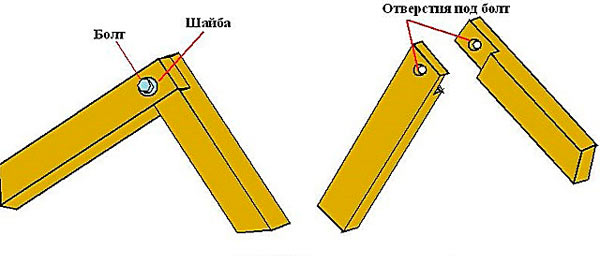
Video on the topic:
There are other options for similar fastening. For example, some experts recommend using the tongue-and-groove system. But this method requires serious carpentry skills. Therefore, it is not used so often.
How to stitch
If the house is small in width, then there will be no special problems with finding material for construction. But if the structure is large, then an operation such as fastening rafters from several parts or building up may be necessary. How can you cope with such a task? Here builders advise fastening the parts together in one of the following ways:

Diagonal or main rafters cannot always be made from a solid board or timber. In this situation, you cannot do without merging the two parts. But when doing this work, you need to remember the basic rule. Such a connection must be strong, because it will be subject to strong loads. Therefore, fastening must be done efficiently and slowly.
What is used at work
How to attach the rafters to the Mauerlat or to each other was discussed a little higher. There are many options to make this work. But to ensure a strong connection, the correct fastening devices must be used. Of course, first of all we are talking about nails. It is with their help that rafters and other elements of the system are most often secured. But there are other devices.
When constructing the roof of a house, the following elements can be used:
- special mounting perforated tape;
- metal corners;
- steel plates;
- beam and beam support;
- nail plates;
- wire tie;
- bolts with nuts;
- staples;
- corners of the Kyrgyz Republic;
- WB brackets;
- LK fasteners and so on.
Fasteners for the rafter system are available in a wide range. Each of them has its own application features, pros and cons. Quite often, metal corners and plates are used for reliable fastening. Such fasteners for rafters allow you to securely hold them in place. For a skate, a corner is most often used.
Plates for fastening rafters can be either simple steel strips or have a nail type. The latter option does not require additional fastening (nails or screws are not used here). On the back side of the plate there are already thin and sharp protrusions, with the help of which it is mounted. But there is one subtlety here. A nail plate can only be used if the rafter pair is assembled on a horizontal surface, and only then installed in its place.
Another fastening element is very often used - staples. They are a metal rod bent at both ends at right angles. Using staples, you can strengthen the places where the rafters are attached to the mauerlat or to the ridge beam.
KR corners are produced in a large assortment. Their main goal is to prevent the bolted connection from loosening. WB brackets are used to attach rafters to wall beams. In this case, there is no need to make cuttings. Therefore, their use greatly simplifies and speeds up work. 
Fastening the rafters to the ridge girder, mauerlat or to each other is an important task. To do this work correctly, you should use the following recommendations from experts:

